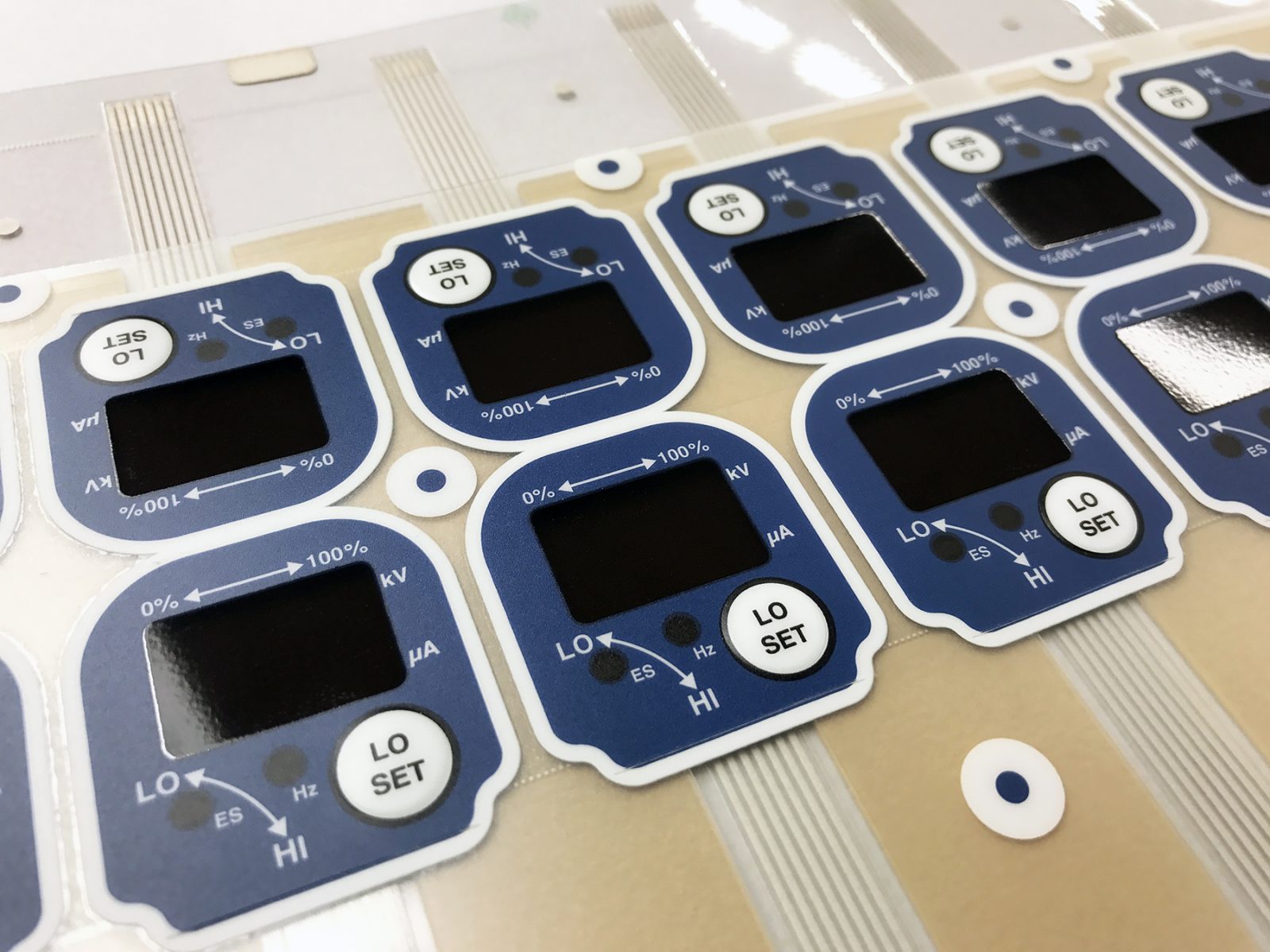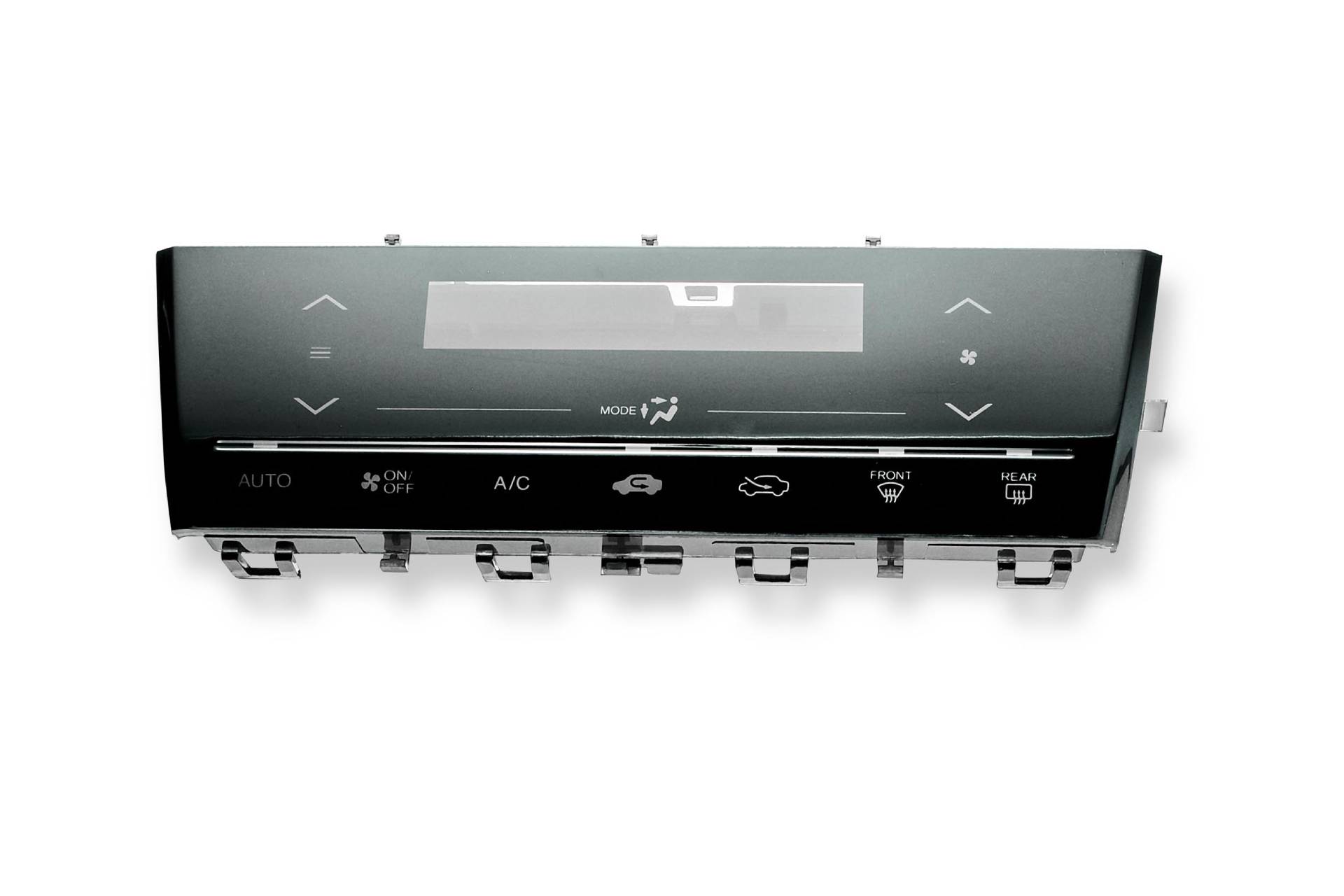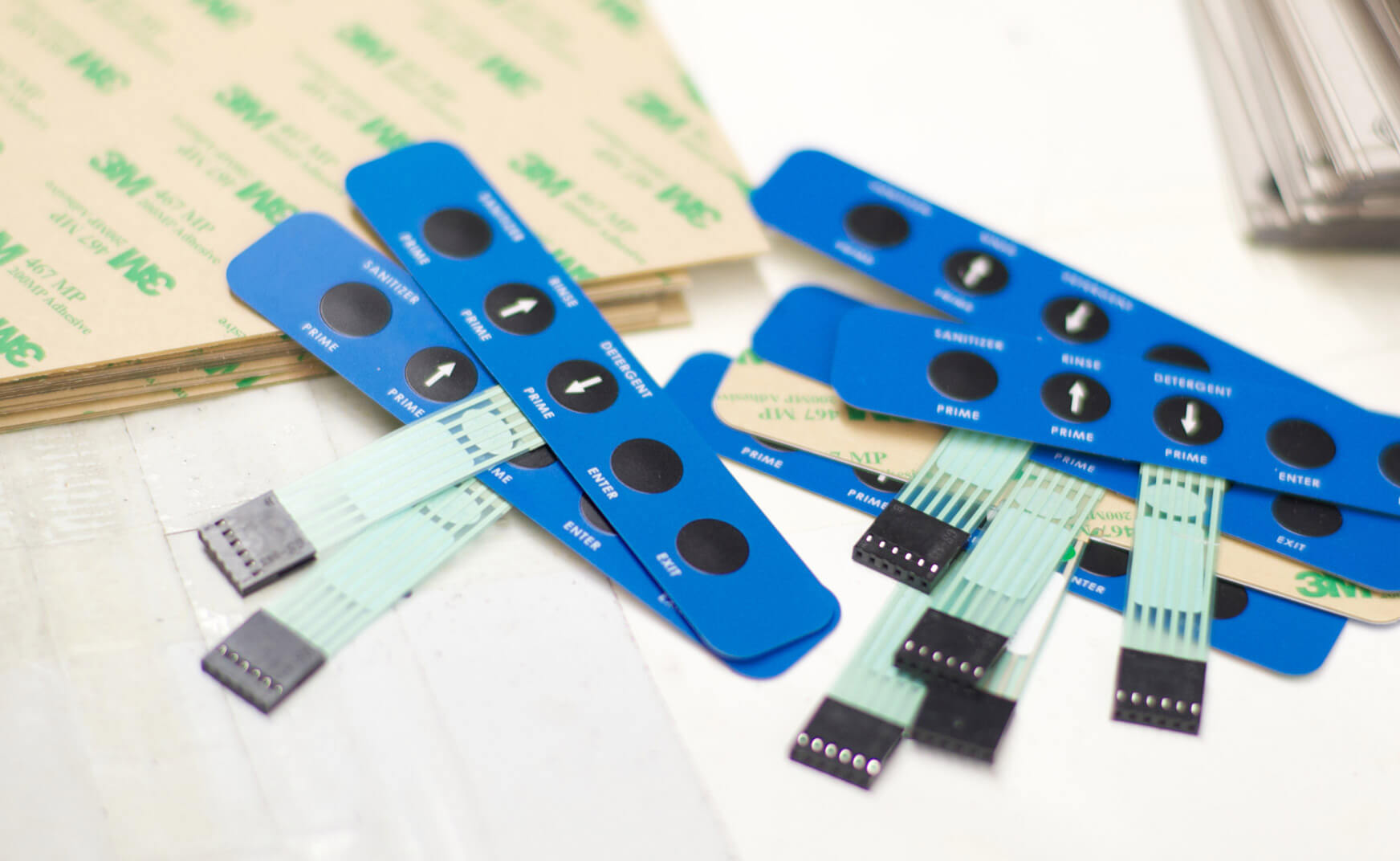Experienced Membrane Switch Manufacturer for Challenging Projects
Understanding the Relevance of Membrane Switch in Modern Electronic Devices and Their Applications
Membrane switches over serve as an essential element in modern-day electronics, offering an efficient interface for individual communication. Their customizable and lightweight nature makes them suitable for a variety of applications across varied markets. Recognizing their essential elements and advantages can supply insights right into their expanding significance. As technology remains to breakthrough, the development of Membrane switches elevates questions concerning their future applications and layout developments. What lies ahead in this dynamic field?

What Are Membrane Buttons?
Membrane buttons are essential elements in modern-day electronics, working as interface that facilitate interaction between gadgets and individuals. These switches contain numerous layers, including a visuals overlay, a glue layer, and a circuit layer, every one of which interact to create a practical and sturdy interface. The style allows for a flat, inconspicuous remedy that can be personalized relating to size, shape, and aesthetic appearance, making them appropriate for numerous applications, from consumer electronics to clinical tools. The tactile feedback given by Membrane switches enhances customer experience, while their resistance to dust and wetness makes them optimal for testing settings. Additionally, Membrane switches can integrate attributes such as backlighting and published graphics, further increasing their usability. Their convenience and effectiveness make them a preferred choice in sectors where reliability and ease of usage are vital, ultimately contributing to the smooth procedure of modern-day electronic gadgets.
Secret Components of Membrane Switches Over
While numerous components contribute to the functionality of a membrane switch, three primary layers play substantial roles in its style and operation. The leading layer, normally made from a durable polymer, works as the user interface for individual communication, typically featuring printed icons and graphics. Below this is the spacer layer, which keeps the needed distance in between the leading layer and the circuit layer. This spacer layer warranties that the button triggers just when pushed, stopping unintentional inputs. Finally, the circuit layer includes conductive traces that complete the electrical circuit when the top layer is dispirited. These traces can be made from numerous materials, including copper or silver. Together, these components produce a robust and reliable gadget that is portable and flexible, ideal for a large range of electronic applications, from house devices to medical gadgets. Understanding these key components is important for appreciating the overall functionality of Membrane buttons.
Advantages of Making Use Of Membrane Switches Over

Membrane Switch Production Refine
Recognizing the Membrane switch manufacturing process exposes the detailed steps associated with creating these essential elements. The procedure generally begins with the layout phase, where formats and specifications are produced making use of specialized software program. Following this, the graphic overlay is published on a versatile substrate, usually making use of high-resolution printing techniques to assure clearness and precision.Next, the glue layers are applied, which serve to bond the various elements with each other. The circuit layers, made from conductive inks or products, are then published onto a different substrate. These layers are thoroughly lined up and laminated flooring to create a useful switch.After setting up, the switches go through testing to validate capability and toughness. Quality control steps are implemented throughout the procedure to determine and fix any type of problems. Lastly, the finished Membrane buttons are packaged and planned for circulation, ready to meet the demands of modern digital applications.
Applications of Membrane Switches in Various Industries
Membrane switches are increasingly utilized throughout numerous markets, particularly in clinical devices and consumer electronics. In the clinical area, they give trustworthy control interfaces for gadgets that call for exact procedure. In customer electronic devices, these switches boost individual communication by supplying streamlined and responsive interfaces. Receptive Medical Devices Control
Numerous contemporary medical gadgets utilize Membrane switches for structured procedure and boosted individual interaction. These buttons provide a trusted, sturdy interface for a selection of applications, consisting of diagnostic devices, individual monitoring systems, and medical instruments. Their adjustable layouts enable for specific designs that can suit the distinct requirements of health care professionals, making sure intuitive navigation and efficient accessibility to essential features. Furthermore, Membrane buttons are immune to impurities, making them suitable for sterilized atmospheres. The tactile feedback they supply can boost user self-confidence, lowering the risk of mistakes during vital medical procedures. In general, the integration of Membrane buttons in medical equipment substantially adds to improved operational efficiency and individual safety in healthcare settings.
Consumer Electronics Interfaces
In the domain of customer electronic devices, Membrane buttons play a critical role in improving individual interfaces throughout a wide range of tools. These switches are essential to items such as remote controls, microwaves, and video gaming consoles, giving a straightforward and reliable interface. Their design enables a seamless assimilation of graphics and capability, allowing suppliers to produce sleek, contemporary looks without jeopardizing functionality. Membrane buttons are also known for their toughness, commonly official site holding up against substantial usage and exposure to numerous environmental problems. Additionally, they can integrate features like backlighting and responsive comments, further improving the individual experience. As customer demands for sophisticated yet intuitive interfaces grow, Membrane switches over proceed to be an important component beforehand electronic gadget functionality.
Design Considerations for Membrane Switches Over
Designing efficient Membrane switches needs mindful focus to numerous aspects that affect both functionality and individual experience. One important consideration is the choice of materials, as they can impact resilience, responsive feedback, and aesthetic charm. Picking a suitable adhesive is essential for guaranteeing lasting attachment and resistance to ecological factors.In enhancement, the format and style of the button must accommodate customer communication, with button sizes and spacing optimized for convenience of use. The incorporation of graphics and labeling should focus on quality and visibility under numerous illumination conditions.Consideration of electric characteristics, such as actuation pressure and switch level of sensitivity, will improve the responsiveness of the Membrane switch. The style should suit producing processes to ensure cost-effectiveness and prompt manufacturing. In general, a well-thought-out design boosts both the functionality and the user experience of Membrane switches in modern electronic devices.

Future Trends in Membrane Switch Technology
As technology remains to advance, Membrane buttons are poised to integrate new developments that will enhance their capability and application in various areas. One considerable pattern is the incorporation of versatile and durable materials, which will increase the life-span and integrity of these switches. Improved surface area appearances and personalized graphics are additionally expected, enabling for more instinctive customer interfaces.Moreover, the combination of smart innovation, such as touch-sensitive surface areas and haptic comments, is anticipated to improve user interaction, making Membrane switches over extra appealing and responsive. In addition, advancements in printed electronics will certainly enable extra intricate wiring within thinner profiles, further increasing design possibilities.Sustainability will certainly also play a crucial duty in future developments, as producers explore eco-friendly materials and production processes. Generally, these fads will certainly ensure that Membrane switches continue to be appropriate and indispensable in an interconnected and increasingly electronic world.
Regularly Asked Questions
Exactly How Do Membrane Switches Compare to Standard Mechanical Buttons?
Membrane switches over deal advantages over typical mechanical switches, including see it here minimized size, lighter weight, and enhanced longevity. They commonly give a secured surface, boosting resistance to dirt and wetness, making them optimal for diverse applications.
What Products Are Typically Utilized in Membrane Switch Building?

Can Membrane Switches Over Withstand Extreme Environmental Issues?
Membrane switches can hold up against extreme ecological conditions, relying on their style and products. High-grade constructions usually feature sturdiness versus temperature changes, moisture, and direct exposure to chemicals, making them suitable for various requiring applications throughout markets.
How Much Time Do Membrane Switches Over Typically Last Before Failing?
Membrane switches over normally show a lifespan ranging from 1 to 10 million actuations, depending upon factors such as usage regularity, environmental problems, and manufacturing high quality. Regular maintenance can expand their toughness and operational reliability considerably.
Are Membrane Changes Adjustable for Details Applications?
Membrane switches are undoubtedly adjustable for certain applications. They can be customized in performance, size, and style, permitting makers to fulfill unique customer requirements and enhance item aesthetic appeals while maintaining operational performance and durability. Membrane switches are crucial elements in contemporary electronics, serving as individual interfaces that facilitate communication between users and gadgets. The responsive responses offered by Membrane you could try this out switches over improves user experience, while their resistance to dust and dampness makes them perfect for challenging settings. The incorporation of graphics and labeling should focus on quality and visibility under different lighting conditions.Consideration of electric features, such as actuation force and button level of sensitivity, will certainly improve the responsiveness of the Membrane switch. Improved surface appearances and customizable graphics are likewise expected, allowing for even more user-friendly individual interfaces.Moreover, the combination of smart modern technology, such as touch-sensitive surfaces and haptic feedback, is expected to boost user communication, making Membrane changes extra responsive and engaging. Membrane switches offer benefits over traditional mechanical switches, consisting of decreased dimension, lighter weight, and boosted resilience.